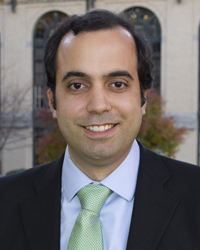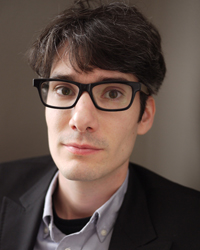Press Release: Carnegie Mellon Researchers Developing Tools To Make Buildings Energy Efficient
Contact: Chriss Swaney / 412-268-5776 / swaney@andrew.cmu.edu

 PITTSBURGH—Carnegie Mellon University is ground zero for researchers developing tools to make buildings and homes more energy efficient.
PITTSBURGH—Carnegie Mellon University is ground zero for researchers developing tools to make buildings and homes more energy efficient.
With a three-year, $1.9 million grant from the Department of Energy, CMU researchers Anthony Rowe and Mario Berges are developing sensor networks and an open-source software platform to optimize energy use in buildings, which annually consume 39 percent of total U.S. energy production. The project builds on results from a larger research effort to integrate all sensors on campus, called Sensor Andrew.
"We want to create a control platform for building energy management that will help monitor and understand energy usage patterns over time," said Rowe, an assistant research professor in the Department of Electrical and Computer Engineering and CMU CyLab.
Berges, an assistant professor in the Department of Civil and Environmental Engineering, also reports that these networks will give facility managers the ability to see if a building is wasting energy or needs replacement equipment.
"Even when facility managers have access to sensor measurements from building automation systems, it is challenging for them to manually analyze and annotate all this data," Berges said. "We need to develop computer algorithms that are able to process and understand the measurements automatically in order to detect and diagnose faulty behavior."
The research team is using the university's 40,000-square-foot Scaife Hall as an open lab to test the network of more than 500 sensors placed strategically throughout the four-story building. The goal of the project is to develop open source software that helps building owners measure, monitor and adjust lighting, HVAC and plug-loads to save energy without compromising occupant comfort.
"User-friendly tools that quickly and economically analyze energy use will also help businesses and homeowners make better use of those technologies to save energy and lower their utility bills," Rowe said. "The big challenge is to eventually support zero net-energy buildings, buildings that over an entire climate cycle actually collect energy from sources like solar and wind power, and be efficient when those are not available."
Commercial and residential buildings produce more than 40 percent of the greenhouse gas emissions in the U.S. each year.
According to the Energy Information Administration, about 48 percent of energy consumption in U.S. homes in 2009 was for heating and cooling, and experts estimate that commercial building owners could save an average of 38 percent on heating and cooling bills by installing energy control systems.
CMU researchers also are looking at individual home appliances and office equipment to test for energy use and learn about user context.
"You can see patterns in energy consumption based on what occupants are doing. The home refrigerator consumes more energy when folks are cooking because the room tends to heat up. We see other problems like when some office laser printers run out of toner, they consume a constant 600 watts keeping the system warm until the cartridge is changed. Finding these types of energy usage anomalies is a great way to reduce waste," Rowe said.
###
With a three-year, $1.9 million grant from the Department of Energy, CMU researchers Anthony Rowe (top left) and Mario Berges (top right) are developing sensor networks and an open-source software platform to optimize energy use in buildings, which annually consume 39 percent of total U.S. energy production.